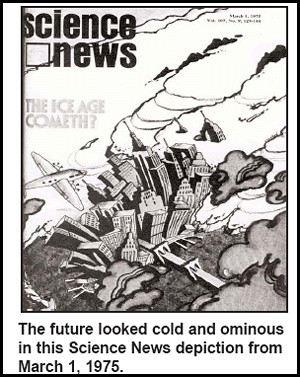Fick just syn på preliminära Wiki-dokumentet The new climate theory of Dr. Ferenc Miskolczi, vilket alltså är under utveckling. Det beskriver en teori man kommer att starta en vetenskaplig diskussion om. Läsning full av intressant empiri, obligatorisk för den mer klimatforsknings-intresserade.
(Not: Abstract och länk till Miskolczi arbete om korrigerad energibalansekvation har Jennifer Marohasy. Se även denna Daily Tech-artikel, där även Stephen Schwartz kritik av IPCC:s energibalansmodell länkas.)
Först poängteras bl a att empiri är centralt i Miskolczis förhållningssätt till klimatforskning. Jag har inte noga läst igenom hela dokumentet, men några viktiga nedslag:
"In this 2004 paper ... [Miskolczi] calculates an increase of global temperature of 0.482 °C as a result of doubling the CO2 concentration.
This is very different from what we learn from the standard theory. The methodological difference is, that the new theory starts with measurements, in contrast with the standard theory that starts with schematic atmosphere models like the Keith-Trenberth scheme. The mathematical difference is, that the new theory treats the atmosphere as semi-transparent, bounded, and in radiation equilibrium with the surface."
Ur ett stycke om bl a vattenånga samt moln i övre atmosfären:
"...we see a double negative feedback through water vapor change! This strongly contradicts the standard theory, that assumes a positive feedback due to water vapor, increasing the sensitivity of surface temperature to CO2 doubling from 1 K to 4…6 K!"
Roy Spencers satellitdata visar hur värmetransport i atmosfären styrs av variation i vatteninnehåll som stabiliserar temperaturen. (OLR, Outgoing Longwave Radiation.)
"Every time the low air temperature increases, the more SW light is reflected, the OLR increases, rain increases, until, when the maximum temperature [=0] point is passed, the sunlight penetrates more, the OLR increases, the rain stops, just until the temperature is normal again.
What we see is a thermostat, the atmosphere increases and decreases it water content, so that the climate is kept at a constant value. If the Earth cannot get rid of its heat through radiation from low altitude alone, clear sky conditions, the adiabat is surpassed, and the heat transfer by latent heat high into the top of the atmosphere increases, so that the OLR from a higher altitude, where the efffective IR optical depth is so much lower, can send the surplus heat into space."
Vidare:
"We see the cloud top temperature, which is a direct measure of the total OLR in that place, increase 2 K as a result of only 0.4 K higher surface temperatures. That means a threefold negative feedback due to atmospheric water content: ?·[2584-2564]= 7.7 W/m2K; a difference of 0.4 K at 305 K is ?·[305.44-305.04]=2.6 W/m2K. Spencer et al. have measured the average feedback as -6.1 W/m2K, a full 100% negative feedback at ground temperature level on average cloudiness.
We see now the physical mechanism behind the observed OLR-SU relations, empirically found and theoretically founded by Miskolczi, in operation. The OLR increases, and the surface cools, with increasing water content as a result of surface temperature increase. The cooling rate, 0.03 °C per day, conforms to the value 1 K/day in van Dorland’s figure 2.4 in case water content varies only 3%.
In great contrast, the standard theory assumes a positive feedback due to water content in the atmosphere, increasing the global warming a factor 2 or 3 as a result of greenhouse gas emission."
En "klatschig sammanfattning" får bli att empiri stöder Miskolczis modell där vattenånga utgör stabiliserande negativ feedback, dämpande effekten av extra växthusgas. Detta i diametral motsats till kraftig men obevisad förstärkning i de IPCC-stödda klimatmodellerna.
Från Niche Modeling.
-------------------------------------------------------------------------------------------------------------------
Tillbakalänkning: SvD.
Andra bloggar om: vetenskap, CO2, koldioxid, klimat, klimatet, vattenånga, klimatförändring, klimatförändringar, klimatmodell, klimatmodeller, växthuseffekten, Ferenc Miskolczi


 Climategate -- The Crutape Letters, by Steven Mosher and Thomas W. Fuller
Climategate -- The Crutape Letters, by Steven Mosher and Thomas W. Fuller
 The Deniers
The Deniers


No comments:
Post a Comment
Anonyma, hitta på och ange signatur. Annars gäller att någorlunda hålla sig till ämnet och visa vanlig hyfs.
Note: Only a member of this blog may post a comment.